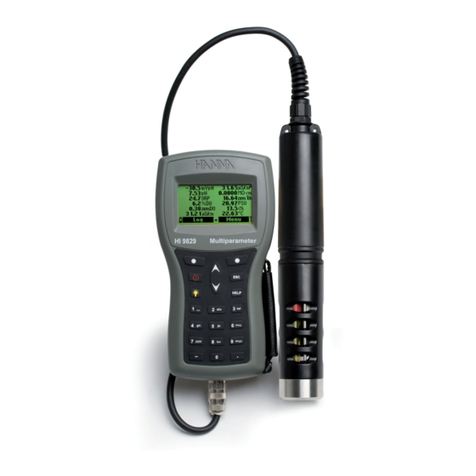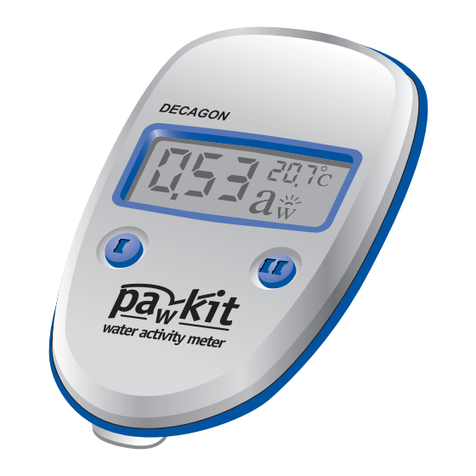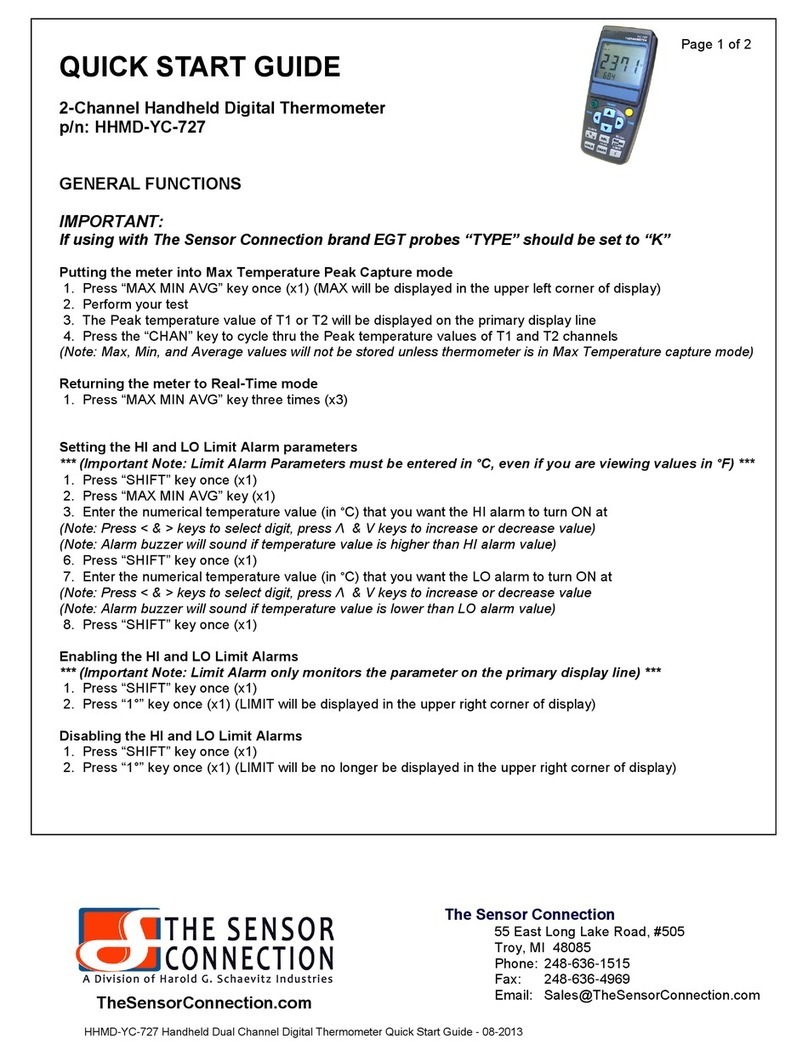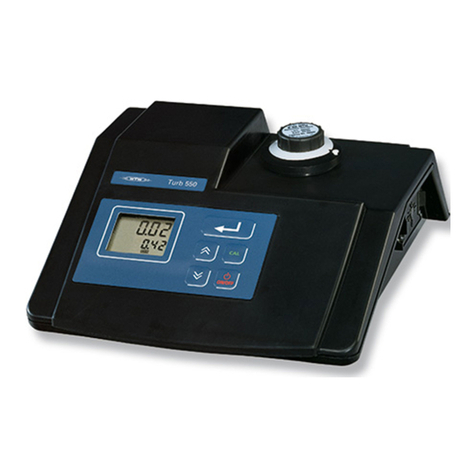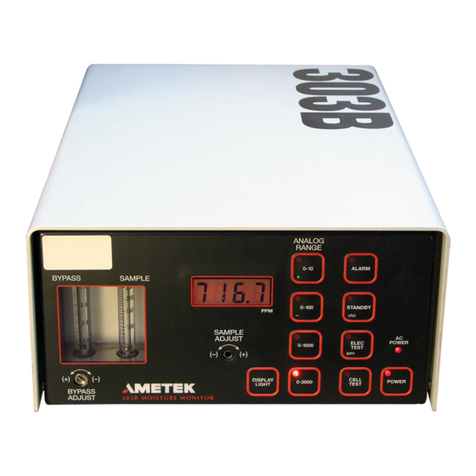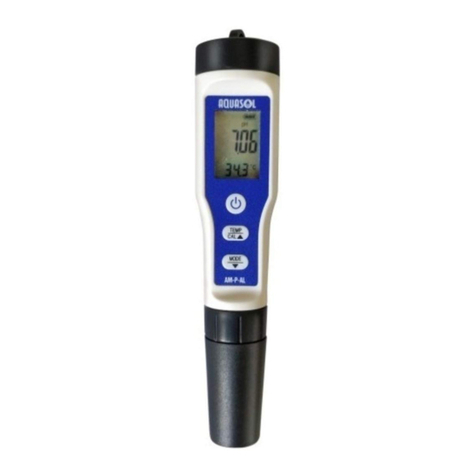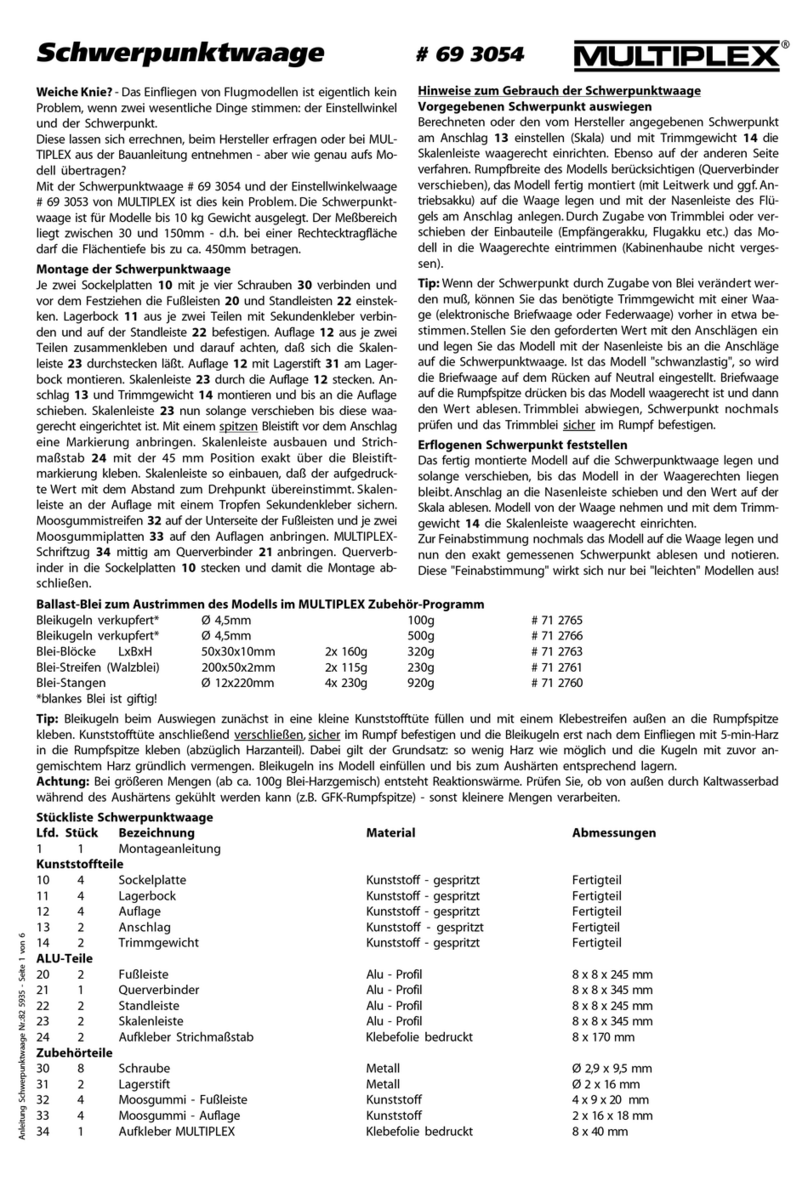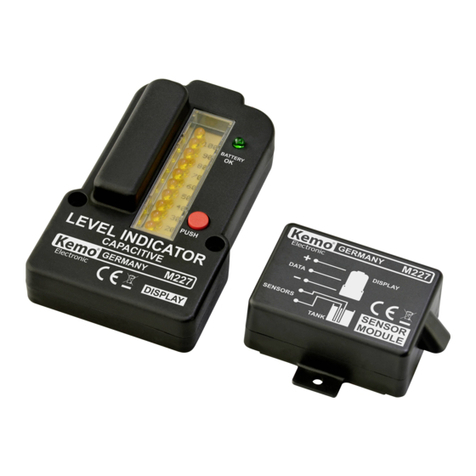Alarm Parameter setting is similar to the Basic
Parameters setting in [Fig3] except the access code
is 0001 instead of 0089
[Fig3] Basic Parameter setting flow chart
The Sensor Connection
42690 Woodward Avenue, Suite 200
Bloomfield Hills, MI 48304 USA
04-2018 Page 2 of 2
TheSensorConnection.com
Note 4: Relay action setting (PMD-A meter does not contain J2 relay. Its
settings (AH2 & AL2 can be ignored).
1) Set AH1=AL1, relay is disabled
2) Set AH1>AL1, relay is for high alarm limit. See [Fig1]
3) Set AH1<AL1, relay is for low limit alarm. See [Fig2]
3. Peak Value
(Press “SET” key then input code 0037 to enter)
Note 5: Peak function is interlocked.
1) When MA is turned off, MA-t can’t be set
2) When MI is turned off, MI-t can’t be set
Peak Value setting is similar to the Basic
Parameters setting in [Fig3] except the access code
is 0037 instead of 0089
Reset the Peak value:
The peak values are stored in the memory even
after the meter is powered off. To reset them,
change the display to show MA, MA-t, MI, or MI-t.
Then, press & hold “˄” key for 3 seconds. The
display will show “——” indicating the memory (for
all four parameters) is reset. The meter will start to
catch the new peak after 2 seconds.
4. Retransmit (Analog Output)
(Press “SET” key then input code 0036 to enter)
Retransmit setting is similar to the Basic Parameters
setting in [Fig3] except the access code is 0036
instead of 0089
Note 6: Output type section. User can select either 0-20 mA or 4-20 mA.
Note 7: Output lower limit. The LED display value when output is at 0 mA or
4 mA.
Example: If you want 100C to output 0 mA then set obL=100
Note 8: Output high limit. The LED display value when output is at 20 mA.
Example: If you want 1000C to output 20 mA then set obH=1000
This number will affect the resolution of the signal
D. Terminal Assignment
1) 1 & 2 are for power input
2) 2 & 5 are for alarm relay output. When alarm is turned on, terminals 2 & 5
are internally connected. To drive a 24V buzzer, connect one lead of the
buzzer to the +24V. Connect the other lead to terminal 5.
3) 4 is for display brightness control. When connecting the illumination signal
(+12V) to it, the brightness will be synchronized with headlight. If not connect-
ed, the brightness can still be controlled by “˄” key.
4) Wire to 6, 7, 8, & 9 depending on the type of signal input.
Example: Use 6 & 7 for EGT thermocouple probe.
5) 3 & 10 is for retransmit (analog output). To change the output from a
current to a voltage, install a 1% precision resistor between terminal 3 & 10.
250Ω resistor = 1~5VDC or 0~5VDC (depending on “obty” setting)
500Ω resistor = 2~10VDC or 0~10VDC (depending on “obty” setting)
E. Application Example
Exhaust Gas Temperature Measurement
DC24V
DC24V-
DC24V Buzzer (optional)

